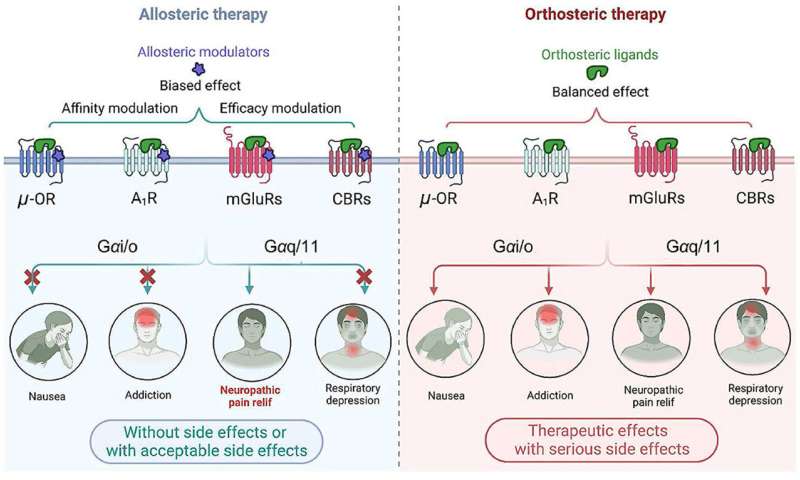Allosteric modulation of G-protein-coupled receptors as a novel therapeutic strategy in neuropathic pain

A publication from Acta Pharmaceutica Sinica B discusses allosteric modulation of G protein-coupled receptors as a novel therapeutic strategy in neuropathic pain.
Neuropathic pain is a debilitating pathological condition that presents significant therapeutic challenges in clinical practice.
Unfortunately, current pharmacological treatments for neuropathic pain lack clinical efficacy and often lead to harmful adverse reactions. As G protein-coupled receptors (GPCRs) are widely distributed throughout the body, including the pain transmission pathway and descending inhibition pathway, the development of novel neuropathic pain treatments based on GPCRs allosteric modulation theory is gaining momentum.
Extensive research has shown that allosteric modulators targeting GPCRs on the pain pathway can effectively alleviate symptoms of neuropathic pain while reducing or eliminating adverse effects.
This article aims to provide a comprehensive summary of the progress made in GPCRs allosteric modulators in the treatment of neuropathic pain, and discuss the potential benefits and adverse factors of this treatment. The development of biased agonists of GPCRs are also covered, and based on important examples of biased agonist development in recent years, universal strategies for designing structure-based biased agonists are described.
It is foreseeable that, with the continuous improvement of GPCRs allosteric modulation and biased agonist theory, effective GPCRs allosteric drugs will eventually be available for the treatment of neuropathic pain with acceptable safety.
More information:
Chunhao Zhu et al, Allosteric modulation of G protein-coupled receptors as a novel therapeutic strategy in neuropathic pain, Acta Pharmaceutica Sinica B (2023). DOI: 10.1016/j.apsb.2023.07.020
Provided by Compuscript Ltd